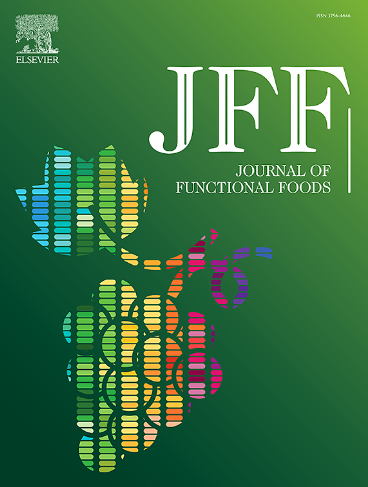超越传统用途:揭示鼠尾草在人类和牲畜营养中的表观遗传,微生物组调节,代谢和营养保健益处
IF 3.8
2区 农林科学
Q2 FOOD SCIENCE & TECHNOLOGY
引用次数: 0
摘要
鼠尾草(Salvia officinalis)是鼠尾草科的一员,在治疗腹泻、风湿病、溃疡、痛风和炎症等疾病方面有着悠久的历史。虽然其传统和烹饪应用已被充分记录,但最近的研究强调了其作为代谢调节剂、微生物组调节剂、表观遗传影响因子和药理学剂的潜力。然而,其对人类和牲畜营养的全面影响仍未得到充分探讨。本文综述了鼠尾草在功能食品、精准家畜饲养和药物开发中的作用,重点介绍了鼠尾草对基因表达、肠道微生物群、代谢效率和营养制剂的影响。通过整合营养基因组学、微生物组工程学、代谢组学分析和药理学研究,我们提出了利用鼠尾草增强人类和兽医健康、恢复力和生产力的下一代框架。本文章由计算机程序翻译,如有差异,请以英文原文为准。

Beyond traditional uses: Unveiling the epigenetic, microbiome-modulating, metabolic, and nutraceutical benefits of Salvia officinalis in human and livestock nutrition
Sage (Salvia officinalis), a member of the Lamiaceae family, has a long history of medicinal use for conditions such as diarrhea, rheumatism, ulcers, gout, and inflammation. While its traditional and culinary applications are well documented, recent research highlights its potential as a metabolic modulator, microbiome regulator, epigenetic influencer, and pharmacological agent. However, its full impact on human and livestock nutrition remains underexplored. This review examines the role of sage in functional foods, precision livestock feeding, and drug development, emphasizing its influence on gene expression, gut microbiota, metabolic efficiency, and nutraceutical formulations. By integrating nutrigenomics, microbiome engineering, metabolomic profiling, and pharmacological research, we propose a next-generation framework for utilizing sage to enhance health, resilience, and productivity in both human and veterinary applications.
求助全文
通过发布文献求助,成功后即可免费获取论文全文。
去求助
来源期刊

Journal of Functional Foods
FOOD SCIENCE & TECHNOLOGY-
CiteScore
9.60
自引率
1.80%
发文量
428
审稿时长
76 days
期刊介绍:
Journal of Functional Foods continues with the same aims and scope, editorial team, submission system and rigorous peer review. We give authors the possibility to publish their top-quality papers in a well-established leading journal in the food and nutrition fields. The Journal will keep its rigorous criteria to screen high impact research addressing relevant scientific topics and performed by sound methodologies.
The Journal of Functional Foods aims to bring together the results of fundamental and applied research into healthy foods and biologically active food ingredients.
The Journal is centered in the specific area at the boundaries among food technology, nutrition and health welcoming papers having a good interdisciplinary approach. The Journal will cover the fields of plant bioactives; dietary fibre, probiotics; functional lipids; bioactive peptides; vitamins, minerals and botanicals and other dietary supplements. Nutritional and technological aspects related to the development of functional foods and beverages are of core interest to the journal. Experimental works dealing with food digestion, bioavailability of food bioactives and on the mechanisms by which foods and their components are able to modulate physiological parameters connected with disease prevention are of particular interest as well as those dealing with personalized nutrition and nutritional needs in pathological subjects.
 求助内容:
求助内容: 应助结果提醒方式:
应助结果提醒方式:


